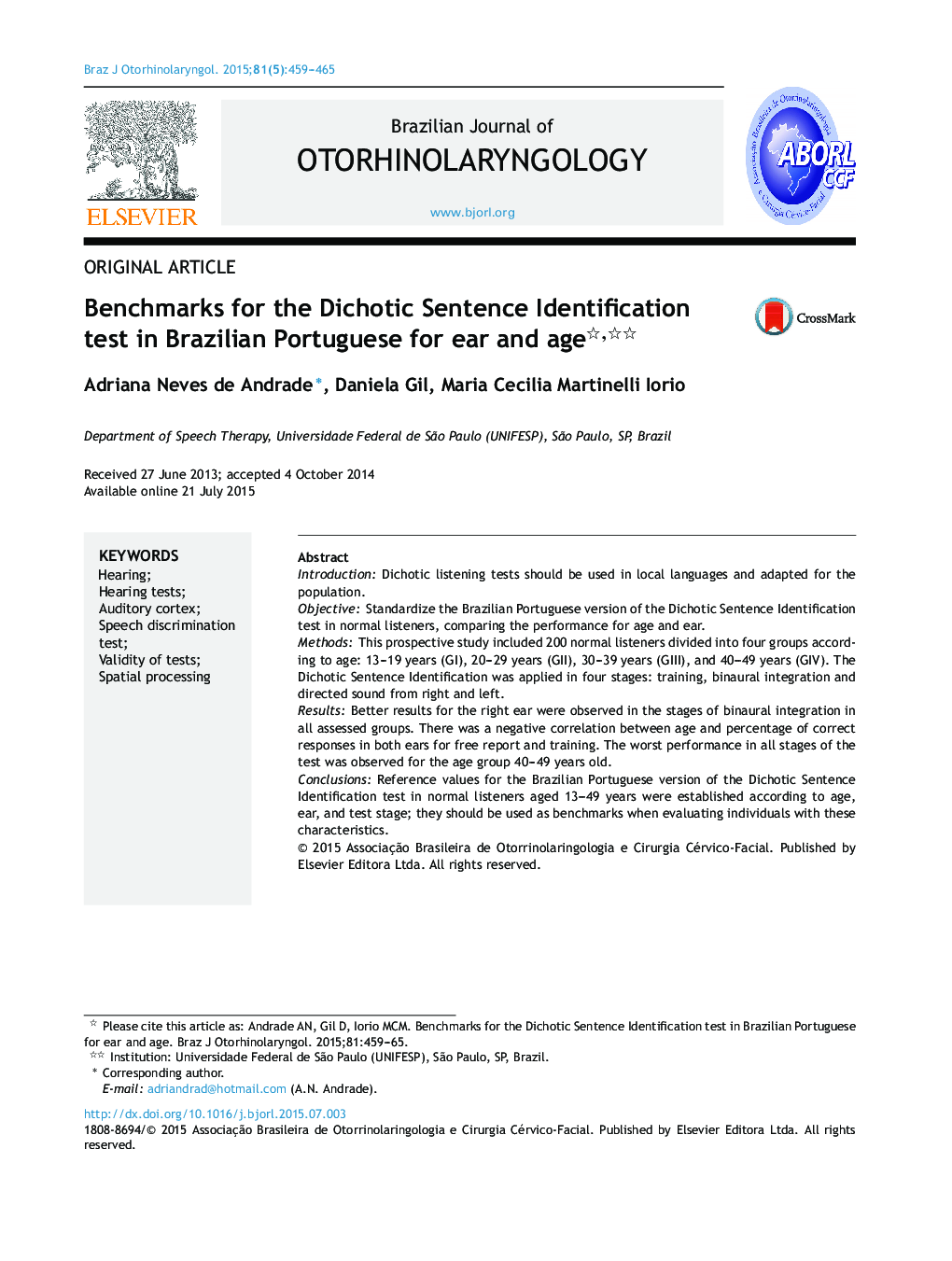| Article ID | Journal | Published Year | Pages | File Type |
|---|---|---|---|---|
| 4106164 | Brazilian Journal of Otorhinolaryngology | 2015 | 7 Pages |
IntroductionDichotic listening tests should be used in local languages and adapted for the population.ObjectiveStandardize the Brazilian Portuguese version of the Dichotic Sentence Identification test in normal listeners, comparing the performance for age and ear.MethodsThis prospective study included 200 normal listeners divided into four groups according to age: 13–19 years (GI), 20–29 years (GII), 30–39 years (GIII), and 40–49 years (GIV). The Dichotic Sentence Identification was applied in four stages: training, binaural integration and directed sound from right and left.ResultsBetter results for the right ear were observed in the stages of binaural integration in all assessed groups. There was a negative correlation between age and percentage of correct responses in both ears for free report and training. The worst performance in all stages of the test was observed for the age group 40–49 years old.ConclusionsReference values for the Brazilian Portuguese version of the Dichotic Sentence Identification test in normal listeners aged 13–49 years were established according to age, ear, and test stage; they should be used as benchmarks when evaluating individuals with these characteristics.
ResumoIntroduçãoOs testes de escuta dicótica devem ser utilizados na língua nativa e adaptados para a população alvo.ObjetivoEstabelecer critérios de referência para o teste DSI em indivíduos normouvintes segundo a orelha, faixa etária e etapa do teste.MétodoEstudo prospectivo transversal com 200 indivíduos normouvintes, separados em quatro grupos: 13 a 19 anos (GI), 20 a 29 anos (GII), 30 a 39 anos (GIII) e 40 a 49 anos (GIV). O teste DSI foi aplicado em quatro etapas: Treino, integração binaural, escuta direcionada direita e esquerda.ResultadosForam observados melhores resultados para a orelha direita nas etapas de integração binaural em todos os grupos avaliados. Houve correlação negativa entre a porcentagem de acertos e a idade, bilateralmente, para as etapas de treino e integração binaural. O pior desempenho, em todas as etapas do teste, foi observado para a faixa etária de 40 a 49 anos de idade.ConclusõesOs valores de referência para a versão em português brasileiro do teste DSI em indivíduos normouvintes de 13 a 49 anos de idade foram estabelecidos segundo a idade, orelha e etapa do teste e devem ser utilizados como padrões de referência na avaliação dos indivíduos com essas características.
